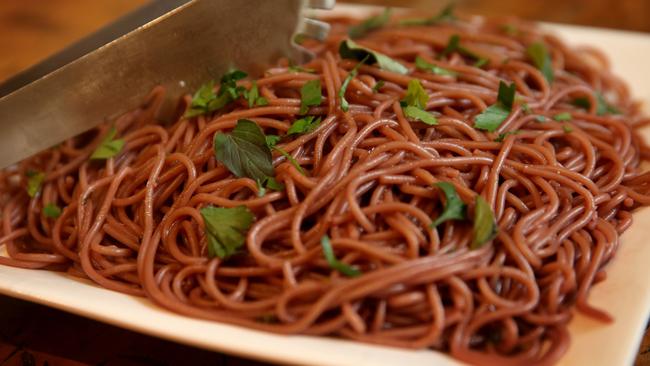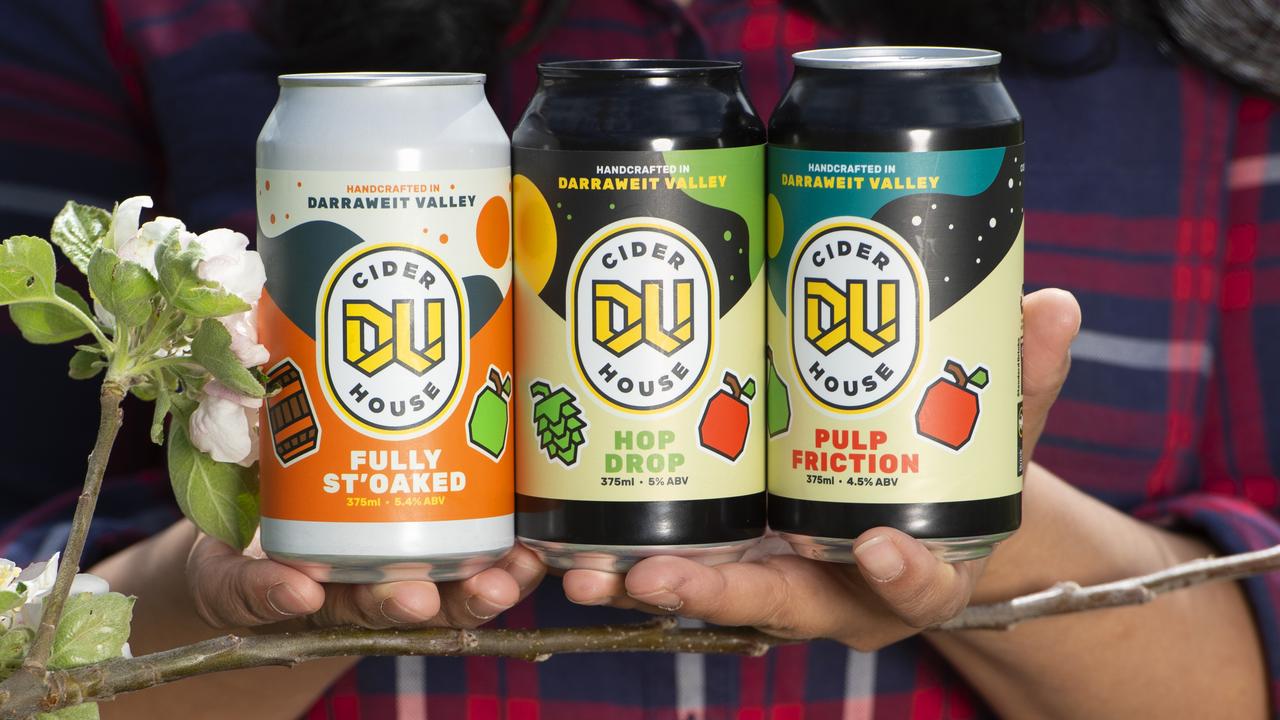Jeremy Vincent: Sangiovese spaghetti
WE LOVE wine with our cheese and we often drink it when catching up with friends. And cooking with wine isn’t a new concept, writes JEREMY VINCENT.

WE LOVE wine with our cheese and we often drink it when catching up with friends. And cooking with wine isn’t a new concept.
I’ve always got a bottle handy to help flavour dishes in a subtle way, particularly when thinking about the use of red wines in dishes for the cooler months.
Try this simple treatment of spaghetti mixed with a subtle dash of fresh herbs, and you’ve tweaked a traditional dish into something a little special.
SANGIOVESE SPAGHETTI
The character of spaghetti is transformed in this simple dish that sees the pasta absorb a light red wine. Serve it on its own as a starter, or with a traditional bolognese sauce.
Serves 4-6
¼ cup extra-virgin olive oil
2 tspn minced garlic
¼ tspn salt, plus more as needed
Generous pinch red chilli flakes
1 x 750ml bottle Sangiovese wine
500g spaghetti
½ tspn beef stock powder (or half cup beef stock)
2 tspn finely chopped oregano
2 tspn finely chopped parsley
Bring a large pot of water to the boil. In a separate large, high-sided frying pan add the oil, garlic, salt and chilli flakes. Heat over medium-high, stirring occasionally, until the garlic is just beginning to brown. Pour in the red wine (stand back as the liquid may splatter) and bring to a rapid boil.
Meanwhile, season the boiling water generously with salt. Add the spaghetti and cook for 2 minutes.
Transfer the spaghetti to the pan with the boiling red wine, and add the stock powder (or liquid stock) and 1 teaspoon of the oregano; cook, stirring occasionally with tongs, until the spaghetti is tender, 6-8 minutes.
Transfer the pasta to a platter and top with the remaining oregano and the parsley. Serve immediately.
TIPS ON COOKING WITH WINE
RED wine will go with several dishes. While people can alter recipes to make red wine barbecue sauce, or red wine steak sauce, a key job of red wine in cooking is to marinate other ingredients, bringing out the food’s innate flavours and the colour. They add “dryness”, making dishes taste less sugary. Similar to food and wine pairings, red wine should be added to dishes containing red meat, or dishes with a lot of vegetables, such as stews.
WHILE red wine enhances flavour, white wines tend to alter it. Of course, this doesn’t mean that white wine will decrease the horrible taste of a dish. White wine will add an acidic feature, making the dish more tart. White wines are best used for cream sauces, or with chicken and fish.
DOLLARS can make sense. Wine that you cook with should be wine that you would drink. This doesn’t mean that you need to open those bottles you’ve kept for a special anniversary or other occasion, but adding weak wine can hurt, even ruin, your dish. A good rule of thumb is to never add cheap wine.
COOKING wine, by definition, is a very inexpensive wine that has been treated with salt as a preservative. Its reason for being is to be added to food. While some people advocate the use of cooking wine, true food lovers don’t, because cooking wine tastes exactly like it’s supposed to taste: like wine you’d never want to drink.
YOU may imagine that an entree full of alcohol will cause mayhem around the table, but, in truth, using alcohol for cooking won’t have as much of an affect as using it for drinking. This isn’t to say that all the alcohol in food disappears (some dishes that aren’t cooked very long can still have a high alcohol content), but the longer something simmers, the more the alcohol evaporates, leaving the dish full of flavour but on the verge of being sober. The alcohol in wine evaporates at around 80C, and what’s left are flavour components such as acidity, residual sugar and fruit aromas. But remember, whichever wine you choose, don’t cook it too long or you’ll lose some flavours.
MAKE sure the intensity of the wine doesn’t overpower the food. Don’t go overboard with a strong white to cook fish — try a softer variety such as sauvignon blanc. Highly tannic red wines can leave unpleasant bitterness in any dish, so if you’re cooking with red wine, avoid young reds or wines known for their strong tannins. Merlot is usually a safe choice.


